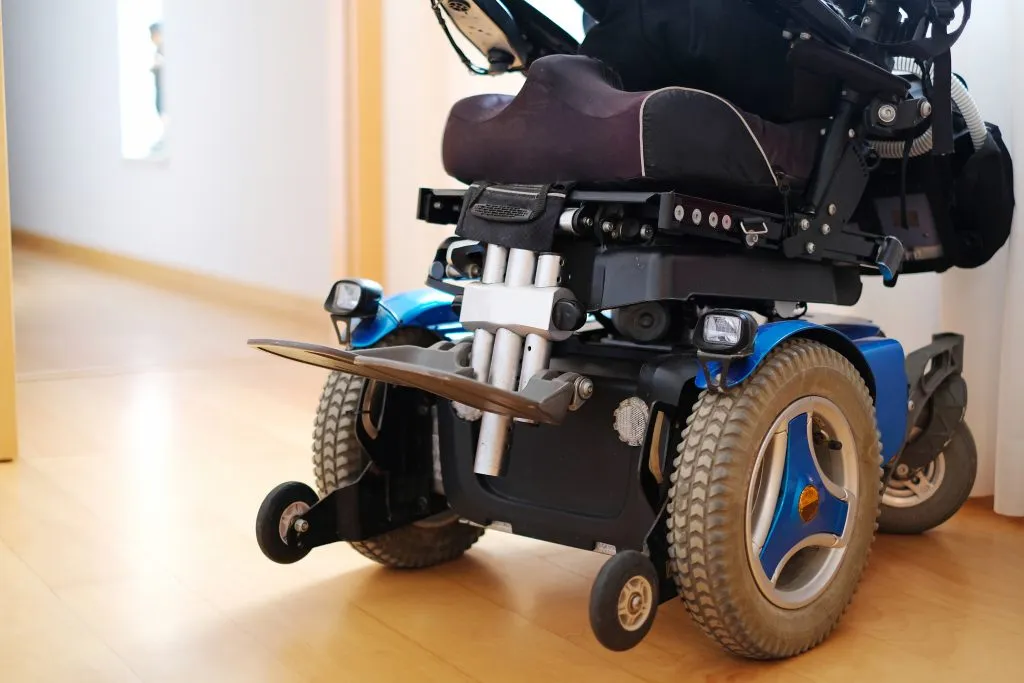More than ever, the pediatric wheelchairs of today are well-designed and technologically advanced. These power wheelchairs for kids are sophisticated, and exhibit a level of smart design that enables children who cannot walk on their own to experience a level of freedom that was previously out of reach. This is why choosing the right pediatric wheelchair is so important; getting and staying mobile helps disabled kids grow into healthy, independent adults who are ready to take on the world.
The pediatric wheelchair basics
Choosing a pediatric wheelchair means deciding which activities are most important for your child, and what needs the chair will be serving; this is because there are always trade offs from chair to chair. The perfect pediatric wheelchair for your child will allow a wide range of positions, including laying, sitting, and standing. This way your child can move their body around throughout the day while still staying functional and comfortable.
Pediatric power wheelchairs are available in three basic models:
- Front-wheel drive power wheelchairs are typically somewhat slower but are capable of sharper turns;
- Mid-wheel drive power wheelchairs boast the tightest turning capability but can at times be less stable and smooth through starts and stops; and
- Rear-wheel drive power wheelchairs typically move fastest but are tougher to maneuver through tight spots and don’t have as sharp a turning radius.
Industry changes
Wheelchairs have truly evolved over time, and the last two decades have brought the most changes in the industry. The 1990s ushered in the most recent wave of technological advances for manual wheelchairs in particular, because it was during that decade that ultra lightweight materials and nanomaterials were developed and produced at scale. This allowed wheelchair designers to make use of better materials and create manual wheelchairs that are super lightweight and totally durable—not to mention highly customizable.
Setting goals: what does your child need from a power wheelchair?
Choosing the right pediatric wheelchair isn’t easy. Just like any decision about buying a mobility chair, there are lots of moving parts that make up this sort of choice. The size requirements of the child as well as their needs are huge factors here, but the professional counsel of a physical therapist or doctor can also be helpful in this process.
The pediatric wheelchair should really be seen as one piece of a larger puzzle: your child’s total support program. That program is designed to serve the environment, strengths, and needs of your child. Therefore, if you haven’t done it recently, make sure you ask your child’s medical support team for a new assessment of their mobility needs so you can be sure your information is up to date.
The considerations you’ll be taking into account as you shop include:
- Your child’s functional skills and physical abilities;
- Your child’s ability to control their head and eye movements and upper and lower extremities;
- Your child’s ability to use joysticks or activating switches;
- Other factors which might influence which mobility controls are most appropriate; and
- Your child’s needs for seating and posture support.
You may also wish to shop for a pediatric wheelchair that grows with your child. Most pediatric power wheelchairs have frame sections that can expand and adjustable brace supports; these features allow them to “grow” with your child for years. One final factor to consider is maintenance. Beyond typical cleaning that any power wheelchair would need, your pediatric wheelchair maintenance will include taking care of the braking system, hardware, control system, tires, battery, and seat. You’ll need to test the battery in particular on a regular schedule.
Social considerations and pediatric wheelchairs
Social considerations are almost as important as physical needs when you’re shopping for pediatric wheelchairs. As you consider the social side of things, think about your child’s hobbies, lifestyle, friendships, and temperament. Then take it a little further, and ask yourself some questions. How does this child go about making new friends—and keeping existing friends? How does s/he face social situations, both positive and negative? And how does your child cope with being different in social settings?
These are important questions to answer because a new wheelchair calls for a big adjustment. Your child will need to learn how to maneuver the new pediatric wheelchair, and will have to master using the new controls and powering the chair. Even an experienced user can find these new challenges frustrating! How will your child handle it? Will s/he be determined and focused, or is that kind of focus impossible for them at this time? Will patience be a serious stumbling block? Will s/he feel too embarrassed to try and use the new wheelchair in new social situations, or will this kind of new experience be a wonderful new way for them to grow personally?
There are no right or wrong answers here, for sure. But knowing the answers can help you answer your own questions, such as how different the new pediatric chair can be, or how long the adjustment process is likely to take.
Stick to pediatric wheelchairs
Although in some isolated cases there may be good reasons for choosing adult chairs for pediatric users, in almost all cases pediatric wheelchairs are best for children. Unless your healthcare provider has a compelling reason, go with a pediatric wheelchair for your disabled child.

